Using role reversals to shed light on gender issues in our society is not new. It has been going on for a long time, particularly in science fiction. Gender issues are in the spotlight at the moment, particularly with the anti-gay laws in Russia and anti-abortion legislation all over the world. Now, a French short film highlighting gender inequality through role reversal has gone viral.
The question I have is this: why are we still having to explore these issues in fiction? Why haven’t we dealt with them already?
Gender equality – not patriarchy vs. matriarchy
 A French short film, Oppressed Majority, has gone viral four years after it was first made. Why? Well, why not? After watching the film it seems strange to me that it didn’t take off before now. Of course, filmmaker Eléonore Pourriat only recently uploaded it to YouTube with English subtitles – to an absolute tirade of abuse about ‘more feminist bullshit’.
A French short film, Oppressed Majority, has gone viral four years after it was first made. Why? Well, why not? After watching the film it seems strange to me that it didn’t take off before now. Of course, filmmaker Eléonore Pourriat only recently uploaded it to YouTube with English subtitles – to an absolute tirade of abuse about ‘more feminist bullshit’.
The film portrays a man, Pierre, suffering from abuse and sexual objectification at the hands of women. His friend is emasculated and bullied by his wife, topless joggers make rude comments as they pass, and he is attacked by a gang of women. The female police officer objectifies her intern and questions Pierre as to whether his story is legitimate – broad daylight and no witnesses? Even Pierre’s wife is no help. She suggests that he is ‘asking for it’ by wearing shorts. The film hits every note and made me feel a little bit sick watching it.
Gender in science fiction
Science fiction is a wonderful genre of fiction allowing writers to explore all kinds of possibilities – and not necessarily the technological advancement. Very often science fiction tackles issues of gender and race in the hope to better the future.
Science fiction isn’t the only genre digging into these topics, but it is well placed to. The genre requires the writer/creator to reach out to the limits of their imagination – be it to imagine a better future or a dystopian one. But commenting on the current state of society has always been a major preoccupation for science fiction.
The parallel universe
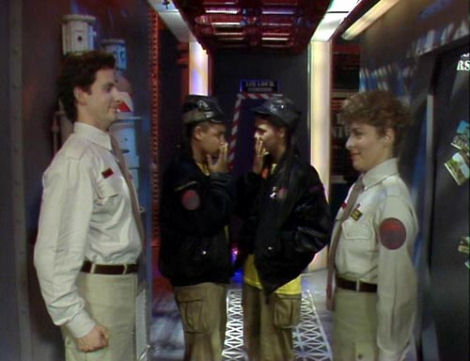 One of my favourite TV shows of all time is the cult classic British sitcom Red Dwarf. In the final episode of series 2, Rimmer, Lister, and the Cat enter a parallel universe where women are the dominant gender – using gender role reversals to make the same point that Oppressed Majority is making over twenty years later. In this universe, it was men that had to ‘burn their jockstraps’, not women burning their bras; Wilma Shakespeare was the great playwright, not William; and it was Nelly Armstrong who was the first woman on the moon.
One of my favourite TV shows of all time is the cult classic British sitcom Red Dwarf. In the final episode of series 2, Rimmer, Lister, and the Cat enter a parallel universe where women are the dominant gender – using gender role reversals to make the same point that Oppressed Majority is making over twenty years later. In this universe, it was men that had to ‘burn their jockstraps’, not women burning their bras; Wilma Shakespeare was the great playwright, not William; and it was Nelly Armstrong who was the first woman on the moon.
Similar to Pourriat’s short film, the episode portrays society as essentially the same, simply reversed. The female Rimmer counterpart sexualizes our male Rimmer, commenting on his tight pants obviously being worn to arouse her. Meanwhile, the female Lister has sexualized images of men in magazines and on posters. When both Listers get stonking drunk and wake up in the morning having had sex, female Lister says patronizingly that it’s the man’s responsibility to take care of contraception.
The other world – aka Aliens!
Science fiction, in general, provides an excellent platform for writers to explore different worlds and possibilities for societies. This can be done in a comedic tone like in Red Dwarf or a more serious one. Star Trek was no stranger to tackling the tough subjects when The Next Generation crew made it to ‘Angel One’ (interestingly, in 1988, the same year that Red Dwarf’s ‘Parallel Universe’ episode aired). It had been envisioned as a metaphorical commentary on apartheid in South Africa – the role reversals highlighting the arbitrary nature of discrimination – whether it is based on race or gender. Instead, it unfortunately played out as a sexist tale of men against women. With the best of intentions, sometimes these stories can go awry.
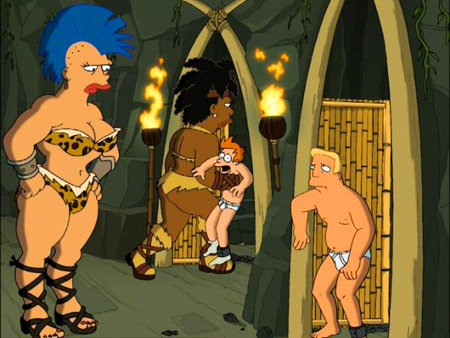 TNG redeemed itself somewhat in 1992 with the episode ‘The Outcast’, which depicted a gender-neutral society. This episode was meant to address LGBT issues by depicting anyone of the race who found themselves identifying with a particular gender or wishing to participate in sexual acts being ridiculed and forced into androgynous conformity. It was much, much better than ‘Angel One’, though actor Jonathan Frakes argued that it didn’t go far enough.
TNG redeemed itself somewhat in 1992 with the episode ‘The Outcast’, which depicted a gender-neutral society. This episode was meant to address LGBT issues by depicting anyone of the race who found themselves identifying with a particular gender or wishing to participate in sexual acts being ridiculed and forced into androgynous conformity. It was much, much better than ‘Angel One’, though actor Jonathan Frakes argued that it didn’t go far enough.
For a more lighthearted approach, Futurama had its main characters visit a planet of Amazonians, in the episode ‘Amazon women in the mood’ (episode 5, season 3, 2001). In its own send-up of various Star Trek episodes (particular The Original Series episode, ‘The Apple’), Futurama’s Amazonian society is controlled by a computer, which in turn, is controlled by a bitter fembot. The men are imprisoned by the women of the planet, sentenced to death by ‘snu-snu’ (sex). They are saved by a woman, from women.
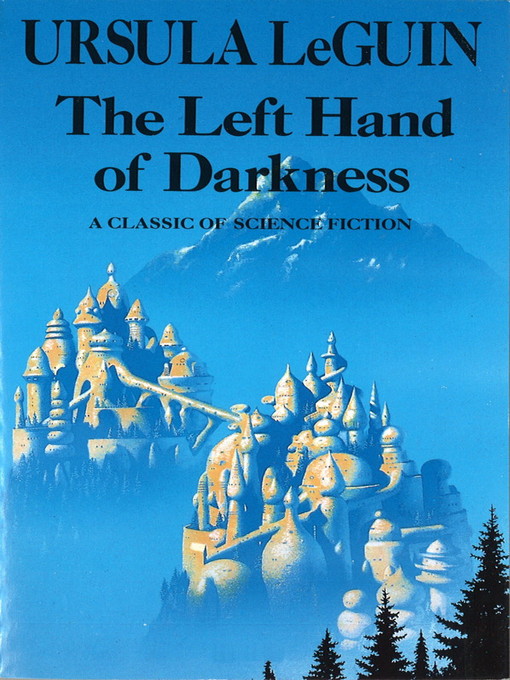 Often cited as one of the most important feminist science fiction novels of all time, The Left Hand of Darkness by Ursula Le Guin details an envoy’s experiences on a gender-neutral planet. The people of Gethen, unlike the aliens in Star Trek’s ‘The Outcast’, have both sexualities within them. Love and sex do exist, although long-term devoted relationships are not common. The novel is an exquisitely written examination of human nature – of friendship, love, and gender. Rather than simply reversing gender roles, Le Guin gave all the people of Gethen the capacity for both gender roles.
Often cited as one of the most important feminist science fiction novels of all time, The Left Hand of Darkness by Ursula Le Guin details an envoy’s experiences on a gender-neutral planet. The people of Gethen, unlike the aliens in Star Trek’s ‘The Outcast’, have both sexualities within them. Love and sex do exist, although long-term devoted relationships are not common. The novel is an exquisitely written examination of human nature – of friendship, love, and gender. Rather than simply reversing gender roles, Le Guin gave all the people of Gethen the capacity for both gender roles.
F*ck stereotypes… here’s what I call a real woman!
I don’t think I can adequately express in words how much I love the character of Katniss Everdeen from Suzanne Collins’ Hunger Games trilogy (or how much I love Jennifer Lawrence either…).
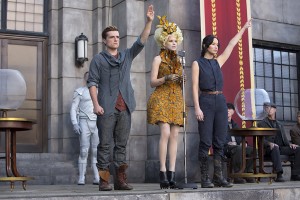 Miss Everdeen is the strong figure in the story that would stereotypically be portrayed by a male protagonist. Katniss is counteracted by two main male figures in her life: the kind, artistic, loving Peeta and the overbearing Gale. It is Peeta who wins her heart, a boy with many personality traits traditionally linked to female characters. And everyone I know who has read the novels loves Peeta – not Gale – and for good reason. He’s awesome! Not effeminate or weak, just plain awesome!
Miss Everdeen is the strong figure in the story that would stereotypically be portrayed by a male protagonist. Katniss is counteracted by two main male figures in her life: the kind, artistic, loving Peeta and the overbearing Gale. It is Peeta who wins her heart, a boy with many personality traits traditionally linked to female characters. And everyone I know who has read the novels loves Peeta – not Gale – and for good reason. He’s awesome! Not effeminate or weak, just plain awesome!
Why is this still an issue?
Pourriat is right. Feminism and female rights in general have been gaining a lot of traction recently, especially following the brilliant filibustering of Wendy Davis and other similar cases of legislation taking a step backwards when it comes to a woman’s right to her own body. However, this shouldn’t be something that ever lost traction – why haven’t we been fighting harder? Why are people only up in arms now that what little rights they had are in danger of being taken away?
Oppressed Majority is not the first instance of popular culture throwing a light on gender equality in a gender role reversal style. It is also not the first to take the idea of a matriarchy to the extreme, presenting the female-centric society as just as bad as men. I doubt it will be the last either. Until we do get gender equality in our society – in all societies across the globe – I hope popular culture continues to tackle these issues.
 Pop Verse Pop Culture Universe
Pop Verse Pop Culture Universe
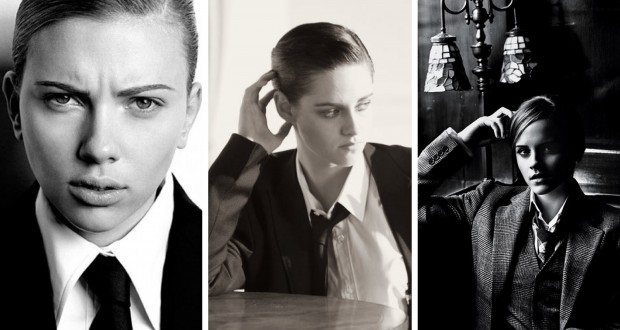






The Book “A Brother’s Price” by Wen Spencer is a very interesting take of what society might be like on an alternate Earth (where the population is ninety percent female and men can be sold by his sisters to marry all the women in another family).
http://www.wenspencer.com/a-brothers-price/
I was searching for any similiar themed books when I found your page; having just watched ‘Oppressed Majority’.